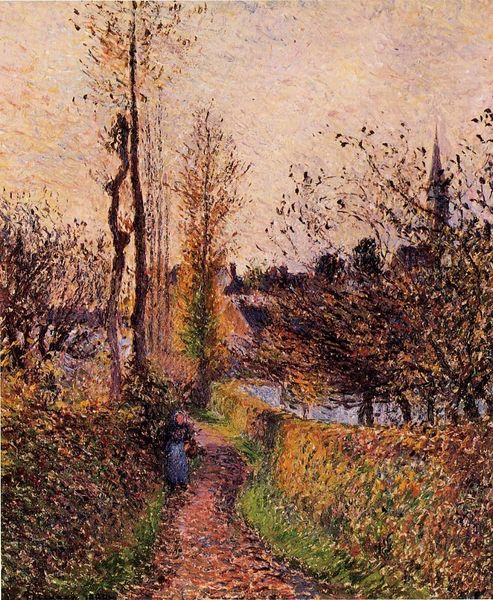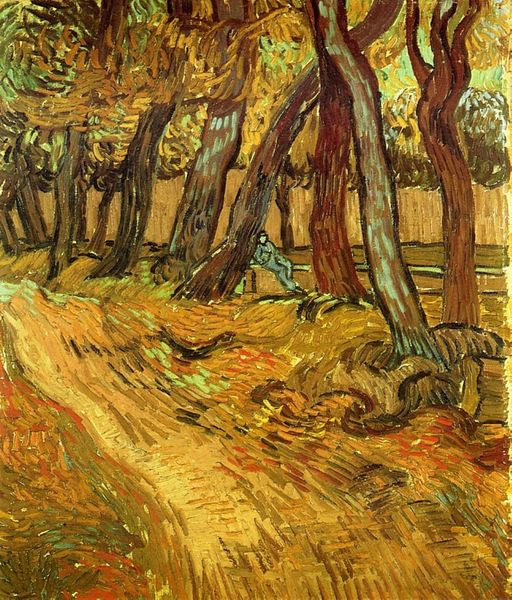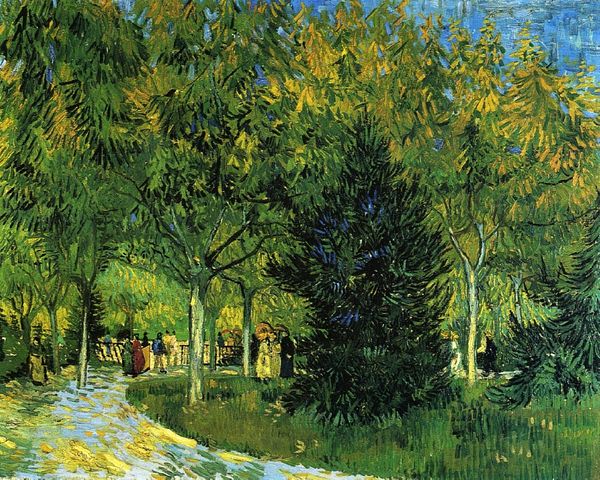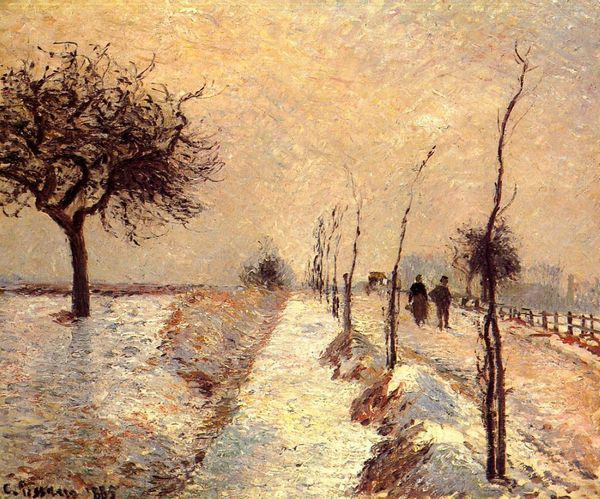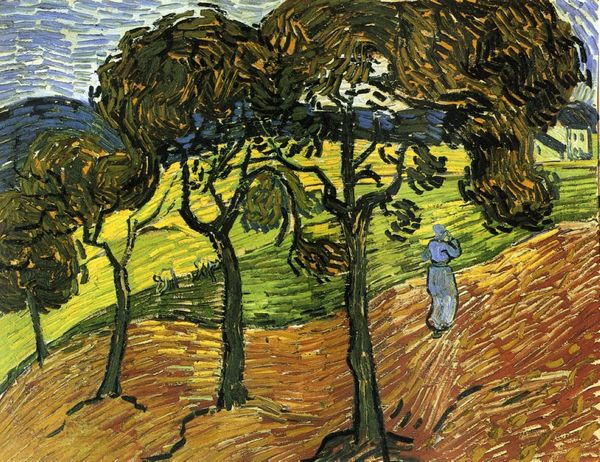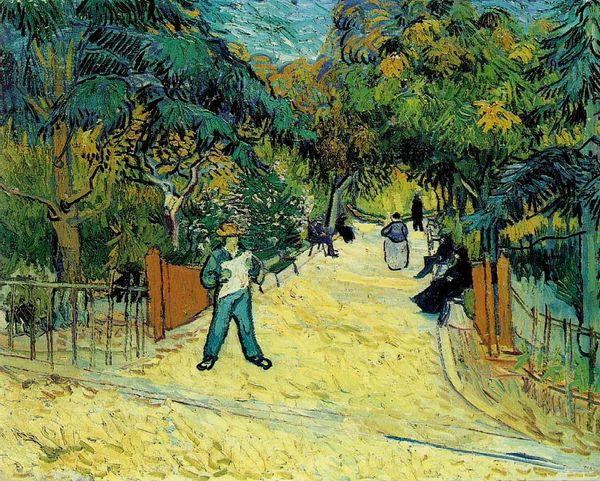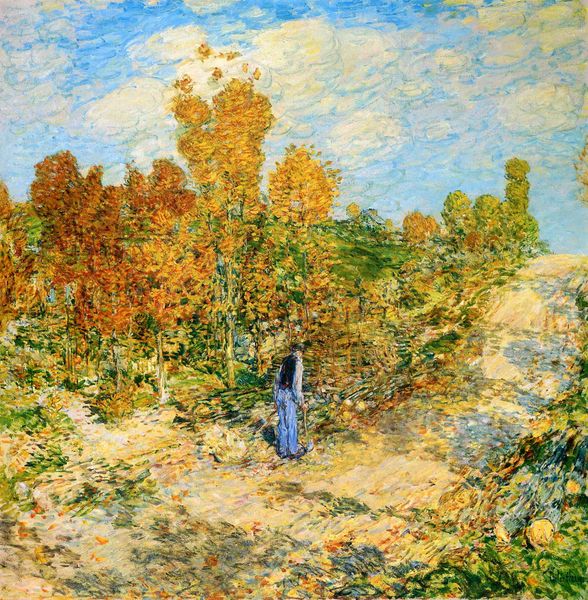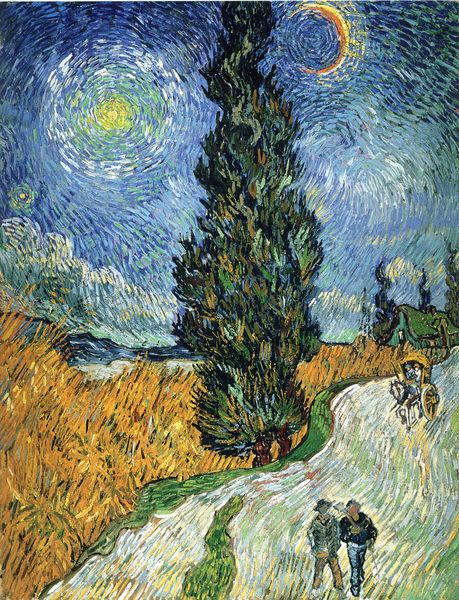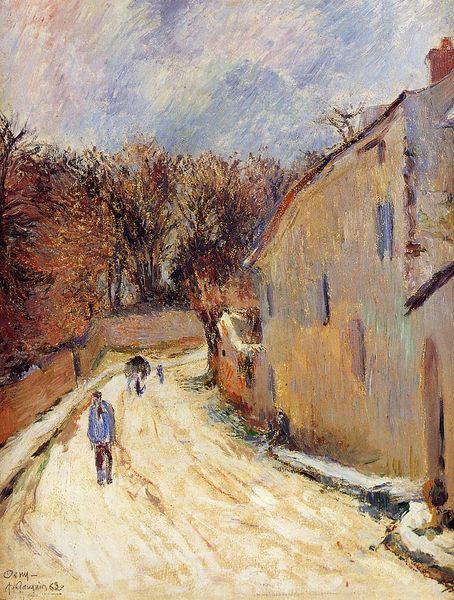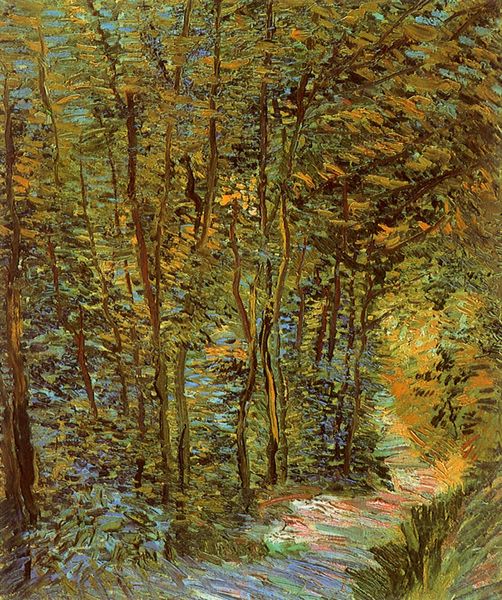
Dimensions: 92 x 73.5 cm
Copyright: Public domain
Curator: Looking at Vincent van Gogh's "Alychamps", painted in 1888, it's fascinating how the artist depicts this ancient Roman cemetery. Editor: Yes, the sheer texture grabs you first! Look at those heavy impasto strokes, like layers of raw earth and ochre—you can practically feel the weight of the paint he laid down, really bringing the materials to life. Curator: Absolutely. And considering Van Gogh's state of mind while working in Arles alongside Gauguin, the social and artistic dynamics certainly colored this piece, wouldn’t you agree? They were aiming for a new direction in art, heavily debated. Editor: Those debates undoubtedly found their way into his process. You can almost sense a tension in the frantic application of oil. What’s truly compelling is how the intense materiality challenges traditional landscape painting, turning it into a study of manual process. Curator: That tension is palpable, I think especially regarding the context. "Alychamps" represents more than just a locale; it touches upon the shifting cultural values and spiritual quandaries of late 19th century Europe. These grounds transformed through religious and societal shifts. Editor: Indeed, the material execution here reinforces the idea of societal transition. Consider that he’s representing a site steeped in history using modern, almost industrial means – manufactured oil paints applied with aggressive brushwork. It’s a convergence of old and new, manifested in the materials themselves. Curator: It almost makes us consider how artistic representations contribute to evolving historical narratives, and who holds the cultural authority to represent history in the first place. Editor: I see it as the artist exploring, quite literally through materials and technique, humanity's complex relationship with death and memory. A graveyard becomes a laboratory. I leave thinking more about the way van Gogh used the tools and pigments than any sense of solemn respect. What a testament to his restless exploration. Curator: Van Gogh shows that art offers a medium to both contemplate and actively mold perceptions. Thanks for helping us unpack the layers, both material and contextual, behind this masterpiece!
Comments
No comments
Be the first to comment and join the conversation on the ultimate creative platform.




